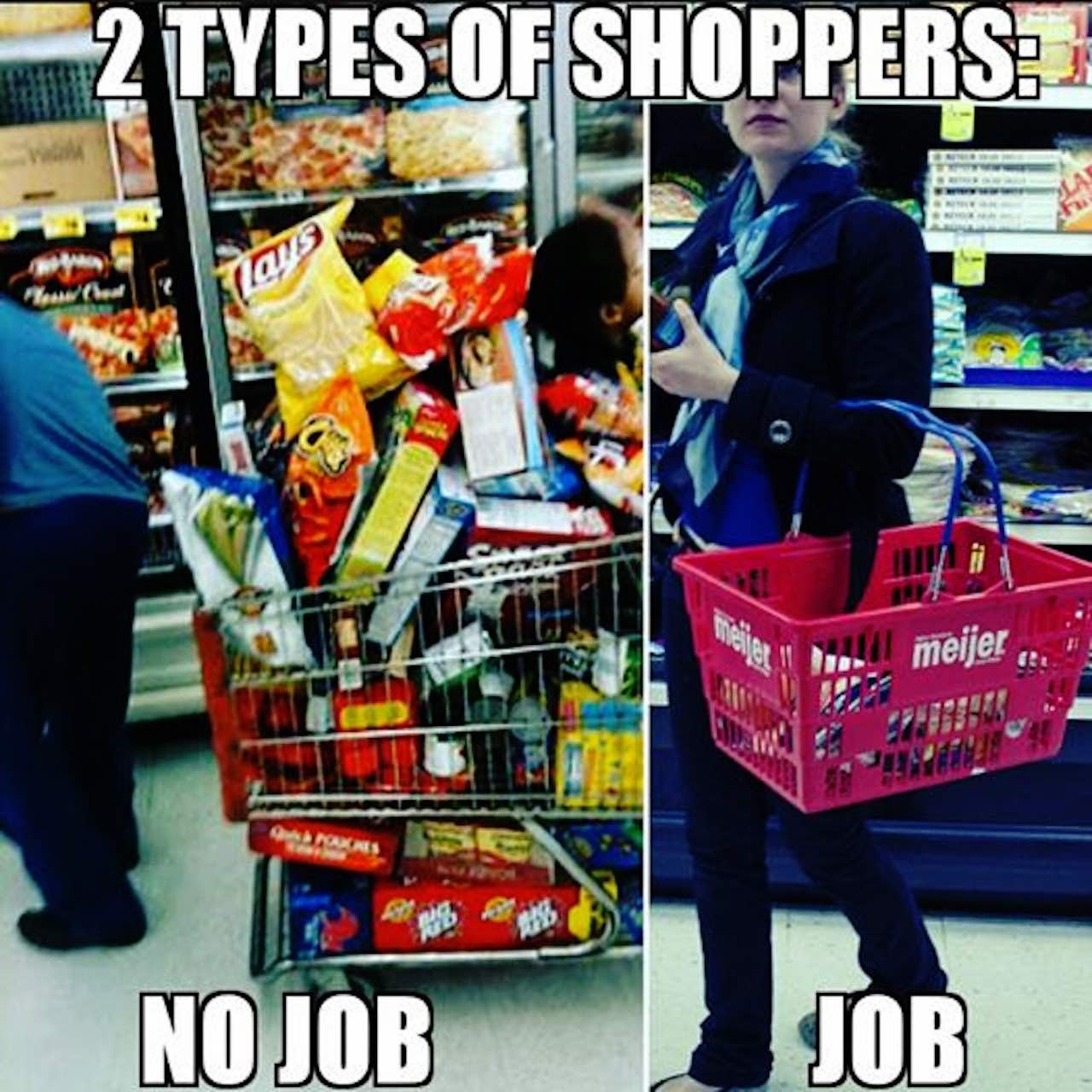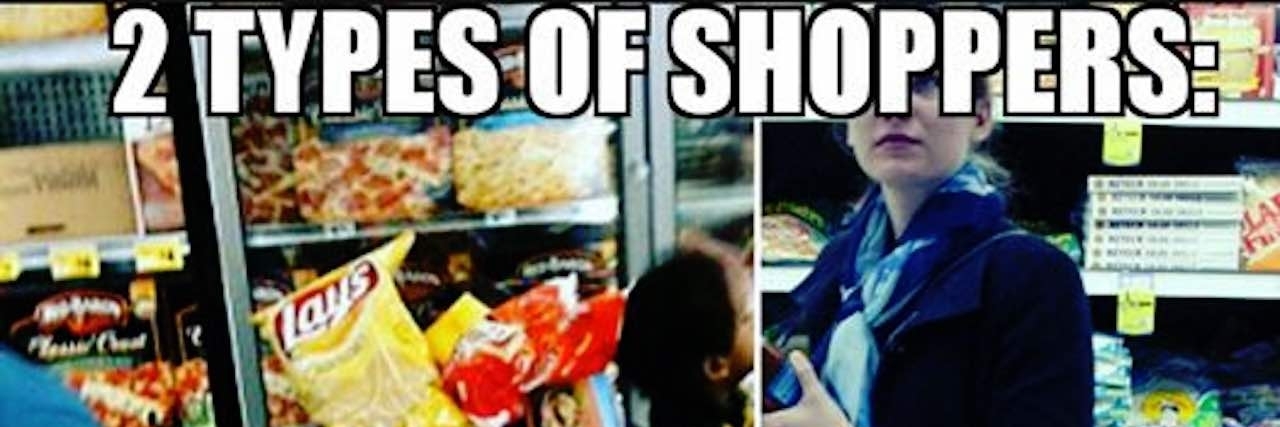I generally don’t tell people I’m on disability and receive food stamps. I grew ashamed and embarrassed that I needed this assistance to survive. I like being independent, and people look down on me when they learn I get help.
But lately, I notice more and more people bashing those who receive financial support. I’m not keeping quiet any more.
Yesterday I signed on Facebook, scrolled through my newsfeed and this photo popped up:

My body overflowed with anger.
Society often pins people who are receiving SSI, disability, food stamps (or really any sort of financial aid), as addicts or alcoholics, or someone out to abuse the system.
But according to the United States Census, “about 56.7 million people — 19 percent of the population — had a disability in 2010.” Here’s what else you need to know:
About 8.1 million people had difficulty seeing, including 2 million who were blind or unable to see.
About 7.6 million people experienced difficulty hearing, including 1.1 million whose difficulty was considered severe. About 5.6 million used a hearing aid.
Roughly 30.6 million had difficulty walking or climbing stairs, or used a wheelchair, cane, crutches or walker.
About 19.9 million people had difficulty lifting and grasping. This includes, for instance, trouble lifting an object like a bag of groceries, or grasping a glass or a pencil.
Difficulty with at least one activity of daily living was cited by 9.4 million “non-institutionalized” adults. These activities included getting around inside the home, bathing, dressing and eating. Of these people, 5 million needed the assistance of others to perform such an activity.
About 15.5 million adults had difficulties with one or more instrumental activities of daily living. These activities included doing housework, using the phone and preparing meals. Of these, nearly 12 million required assistance.
Being frequently depressed or anxious, and other mental illnesses such that it interfered with ordinary activities was reported by 7 million adults.
Overall, the uninsured rates for adults 15 to 64 were not statistically different by disability status: 21 percent for people with severe disabilities, 21.3 percent for those with non-severe disabilities and 21.9 percent for those with no disability.
I am one of the many in the country who receive financial aid. I have been on disability for about four years. I have multiple chronic illnesses that prevent me from holding down a full time job to support myself. I battle with anorexia, depression and anxiety (I am not going to get into the debate of whether those are illnesses — that is a blog post in itself). I also struggle with gastroparesis, postural-orthostatic tachycardia syndrome (POTS) and many other medical complications. They leave me feeling constantly fatigued, dizzy and with chest pain and palpitations.
I would love more than anything to be able to attend a full time job. But my body and mind prevent me from doing this. I think sometimes people who can work take for granted what a privilege that really is. Sure, it can be annoying to get up early, or work late, or miss social events. But what if you had to miss those same events because your body simply wouldn’t let you go? You don’t have the energy and you constantly feel like you have the flu. But your illness is invisible, so you have to pretend everything is OK. You don’t look sick on the outside, so you must not be sick, right? Wrong.
If it weren’t for the help I’m able to receive, I would be homeless or maybe even dead. And like many other Americans, I too live check to check. I do not have money to spend on luxuries and electronics. Many times I have to turn down going to a movie or out to eat because I do not even have $10 to spare. I don’t receive enough food stamps to feed myself a decent amount. So in my experience, that picture above is not accurate. The amount of money I get in food stamps a month? Less than $30.
The only places I ever drive to (when I have the energy) are my appointments because I don’t have enough money to spend on gas to go anywhere else. I don’t smoke or drink, and I’ve never tried drugs (yes, including weed).
I’m not saying people don’t abuse the system. I’m sure people do. But far more people actually need the assistance. On top of that, the government does not take those applications lightly. It’s difficult to get help.
And just so you know: You cannot buy alcohol or cigarettes with your food stamps. For some reason, many people believe you can. (And for the record, we should empathize with, not judge, people who struggle with addiction.)
According to the United States Department of Agriculture:
Households can use SNAP benefits to buy:
- Foods for the household to eat, such as:
- breads and cereals;
- fruits and vegetables;
- meats, fish and poultry; and
- dairy products.
- Seeds and plants which produce food for the household to eat.
Households cannot use SNAP benefits to buy:
- Beer, wine, liquor, cigarettes or tobacco
- Any nonfood items, such as:
- pet foods
- soaps, paper products
- household supplies
- vitamins and medicines
- Food that will be eaten in the store
- Hot foods
Please, before you judge someone, be grateful for what you have in life. Because there are others out there who do not have what you have.
The Mighty is asking the following: Describe a meme, image or sign you’ve seen shared online that struck a chord with you, for good or for bad. Check out our Submit a Story page for more about our submission guidelines.

